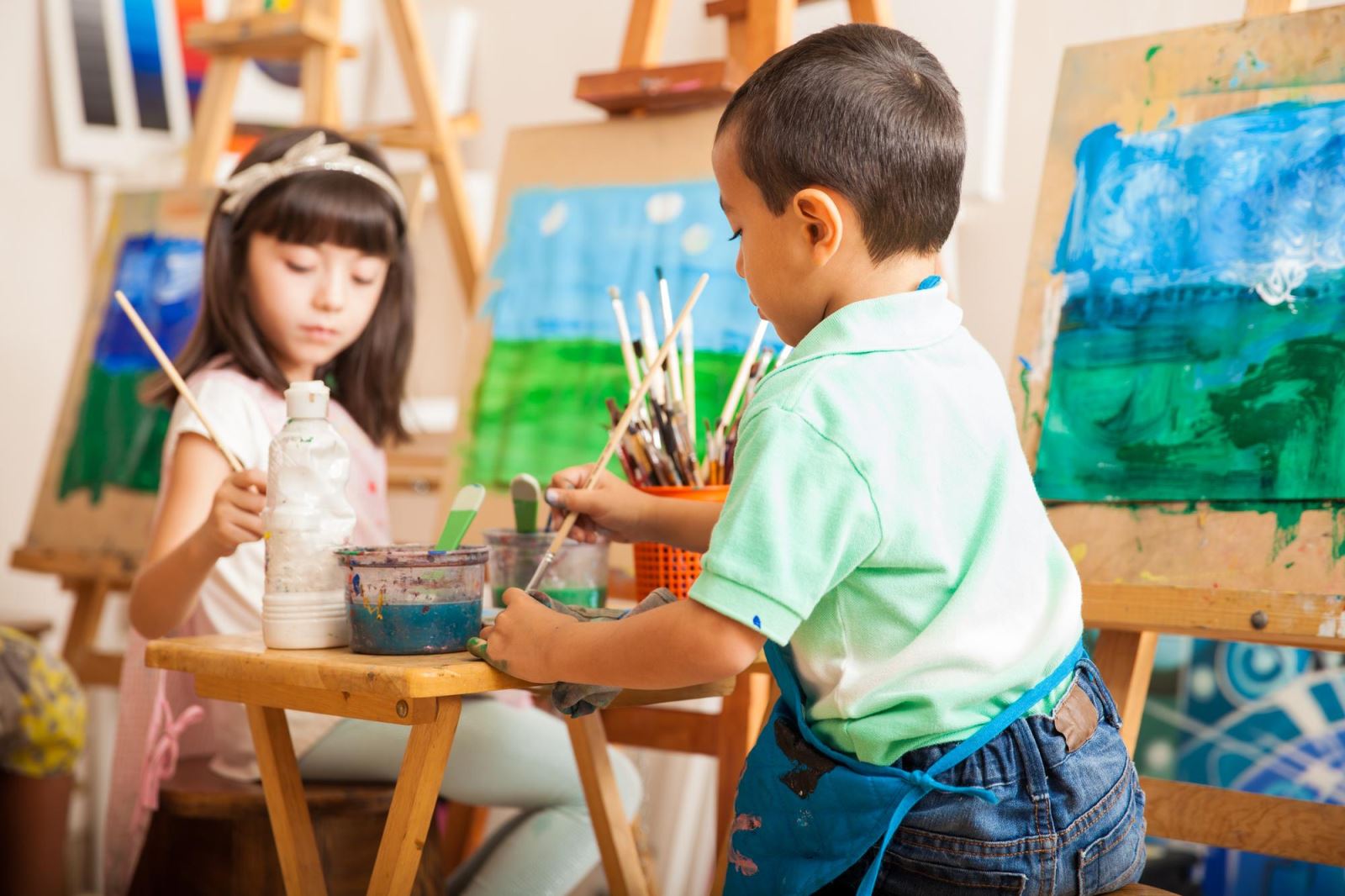Not only is art a healthy channel of expression, simple creative activities are some of the building blocks of child development. In fact, learning to create and appreciate visual aesthetics may be more important than ever to the development of the next generation of children as they grow up.
For young children, making art—or just talking about it—provides opportunities to learn words for colors, shapes, and actions. When toddlers are as young as a year old, parents can do simple activities such as crumpling up paper and calling it a “ball”. By elementary school, students can use descriptive words to discuss their own creations or to talk about what feelings are elicited when they see different styles of artwork.
When kids are encouraged to express themselves and take risks in creating art, they develop a sense of innovation that will be important in their adult lives. Moreover, drawing, sculpting with clay, and threading beads on a string all develop visual-spatial skills. Even toddlers know how to operate a smart phone or tablet, which means that even before they can read, children are taking in visual information.
“Children need to know more about the world than just what they can learn through text and numbers. Art education teaches students how to interpret, criticize, and use visual information, and how to make choices based on it,” says Dr. Kerry Freedman, Head of Art and Design Education at Northern Illinois University. As a matter of fact, the experience of making decisions and choices in the course of creating art carries over into other parts of life.

Many of the motions involved in making art, such as holding a paintbrush or scribbling with a crayon, are essential to the growth of fine motor skills in young children. According to the National Institutes of Health, developmental milestones around age three should include drawing a circle and beginning to use safety scissors. Around age four, children may be able to draw a square and begin cutting straight lines with scissors. Many preschool programs emphasize the use of scissors because it develops the dexterity children will need for writing.
Moreover, studies show that there is a correlation between art and other achievement. A report by Americans for the Arts states that young people who participate regularly in the arts are more likely to be recognized for academic achievement, to participate in a math and science fair or to win an award for writing an essay or poem than children who do not participate.
Though the arts receive relatively little attention from policymakers and school leaders, exposing young people to art and culture can have a big impact on their development. The problem is that almost no one is bothering to study and document the extent to which the arts and culture can affect students.
There was a rare opportunity to explore such relationships when the Crystal Bridges Museum of American Art opened in Bentonville, Ark. Through a large-scale, random-assignment study of school tours to the museum, it was determined that strong causal relationships do in fact exist between arts education and a range of desirable outcomes.
Over the course of a year, nearly 11,000 students and almost 500 teachers participated in the study. Applicant groups who won the lottery constituted the treatment group, while those who did not win an immediate tour served as the control group. Several weeks after the students in the treatment group visited the museum, surveys were administered to all students.
The surveys included multiple items that assessed knowledge about art, as well as measures of tolerance, historical empathy, and sustained interest in visiting art museums and other cultural institutions. Participants were also asked to write an essay in response to a work of art that was unfamiliar to them.
In a similar experiment—a live-theater study—a lottery was conducted to offer free tickets to roughly half of the 700 Arkansas students applying to see “Hamlet” or “A Christmas Carol” at a professional theater in Fayetteville.
The results across both mentioned experiments were remarkably consistent: students who are exposed to cultural experiences demonstrate stronger critical thinking skills, display higher levels of social tolerance, exhibit greater historical empathy, and develop a taste for art museums and cultural institutions.
It can clearly be concluded that cultural experiences expose students to a diversity of ideas that challenge them with different perspectives on the human condition. Expanding access to art, whether through programs in schools or through visits to area museums and galleries, should thus be a central part of any school’s curriculum.
References
pbs.org
edweek.org
nytimes.com
*The article was first published in print in SCIplanet, Spring 2015 Issue "Education".